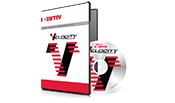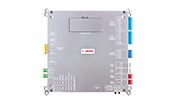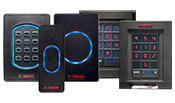What Products Make Up an Easy-to-Install-and-Maintain Hirsch System?
By the Identiv Government Team
If you’ve been following our latest blog series, you’ve gathered the top ten reasons Hirsch is trusted by the U.S. federal government and the benefits you can expect when investing in a Hirsch access control system.
But how much do you know about the Hirsch family of products catered to the U.S. federal government?

Hirsch Velocity Software
The Hirsch Velocity Software for enterprise security management application has been in production since 1999 and is currently in version 3.7. Velocity manages physical access control, photo ID, visitor management, video management, and intrusion detection for more than 10,000 locations worldwide. Velocity is easily upgraded with simple, planned KB updates.

Hirsch Controllers
Hirsch Controllers have been in production since 1989, and are installed at tens of thousands of locations worldwide. Simple plug-in and flash-downloadable firmware upgrades can easily be installed in original panels, making them compliant with constantly evolving federal regulations and standards in a matter of minutes. Hirsch panels have earned an unmatched reputation in the industry for being secure, reliable, and flexible. Hirsch access control panels carry UL 294 and 1076AA ratings and were the first access control panels to offer National Institute of Standards & Technology (NIST) approved Advanced Encryption Standard (AES) 128-bit encryption. All Hirsch panels include full firmware functionality. All features are included in every panel and the user may elect to program and utilize any of these features without any additional firmware or cost from Hirsch.

TS Government Readers
The TS Government Reader family provides multi-technology, multi-use-case flexibility and support for all government-issued smart credentials, including PIV, PIV-I, CAC, TWIC, FRAC, as well as CIV, GICS, MIFARE, DESFire, and other high-frequency credentials. Readers are designed to support GSA 200bit FASC-N, CHUID, GUID, CAK, and PAK validation and are deployed according to the required use case. In a FIPS 201-2 compliant architecture, each reader provided supports Card Authentication Key (CAK) and/or PIV Authentication Key (PAK) validation functionality in addition to its typical authentication factors up to and including CARD+PIN+BIO+CAK/PAK.
Have a question that we didn’t cover in our latest blog series? We’re always here — just let us know.